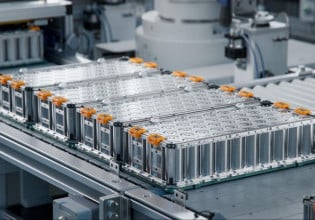New measurements by an Indian physicist and his team support the idea that nanotubes, cylindrical carbon rolls no thicker than an atom, may make good batteries for tiny devices or even power pacemakers, dispensing with cumbersome power packs. Submersed in a slow-flowing liquid, a dense bundle of nanotubes develops a voltage that ranges up to 10mV and increases with flow speed, according to Ajay Sood and his colleagues at the Indian Institute of Science (IIS, Karnataka, Bangalore).
A nanotube is so small that a bundle the size of a sesame seed contains about 50 trillion tubes. Various fluids, from hydrochloric acid to water, flow over a nanotube bundle mounted between metal electrodes, generating voltage. Hydrochloric acid produces voltages about five times that of purified water and 60 times that of methanol. Methanol and water are poorly ionized liquids, while hydrochloric acid contains abundant hydrogen ions. Imbalances that develop between positive and negative charges as liquids flow over the tubes probably cause the voltage to develop. More ions create a greater charge difference and hence a greater voltage.
The newly developed tiny turbine is made of single-wall carbon nanotubes, which might power a lightweight line of heart pacemakers that need neither heavy battery packs nor recharging. Rolled nanotubes also lend themselves to three-dimensional batteries that can be made extra small.






